Final Fantasy VII Remake is a Sequel, and I Have Undeniable Proof
FF7 is fine and all but metatextual rabbit holes? Hell yeah
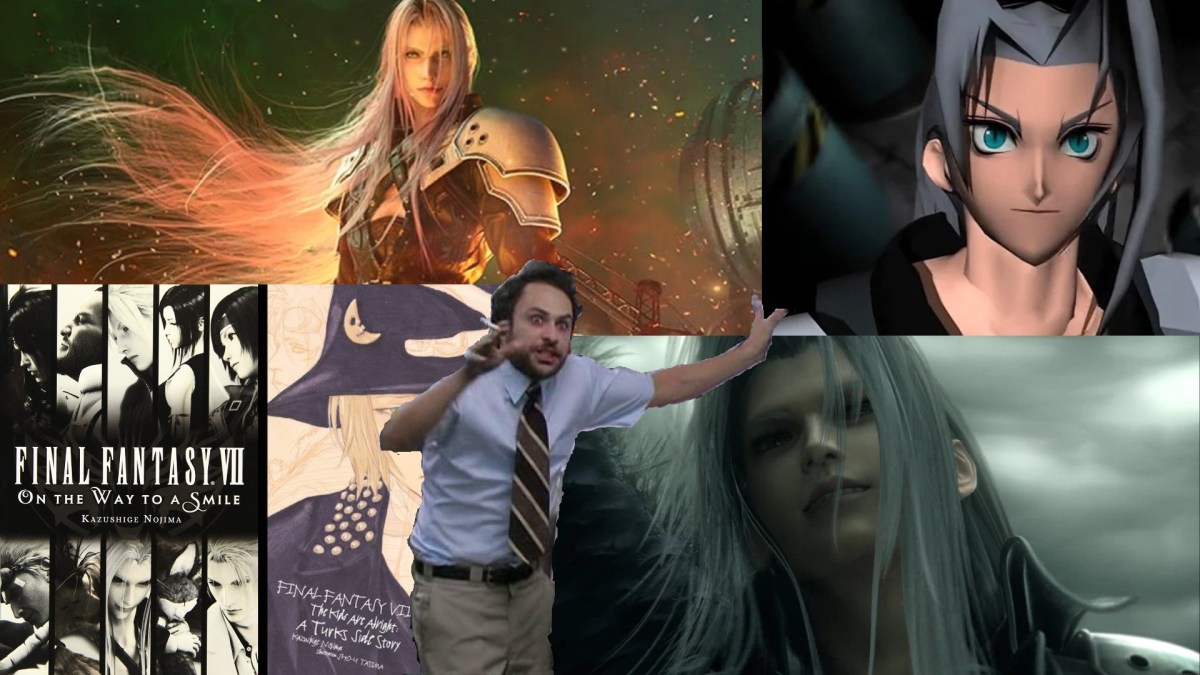
Everyone’s favorite JRPG to argue about, Final Fantasy VII, is 25-by-god-years-old. We celebrated by cramming a ton of information into a 10-minute YouTube Stream. There’s a “remake” of Crisis Core: Final Fantasy VII, and the follow-up to Remake, Final Fantasy VII Rebirth. Fans and media types alike are saying it looks like things are really gonna take form with these two games, establishing what this Remake stuff is all about. But frankly, I disagree. The form has been done established, and we’ve been staring right at it for years. It’s the whole Compilation of Final Fantasy VII.
Related: Final Fantasy Remake Sequel, Crisis Core Remake Revealed during Square Enix Stream
Remake isn’t a fresh start, a spin-off, a reimagining or a totally new alternate universe. It’s a sequel. Remake is the latest game in the Compilation, and Rebirth is the next one. Each game is, in a storytelling sense, directly connected. It’s all linear, baby! Everything is canon, except for Ergheiz. Probably. Jury’s still out on the implications of Super Smash Brothers. And no, this isn’t a Nomura thing, it’s not some wacky Kingdom Hearts galaxy brain abstractionism.
The Pen is Mightier Than the Buster Sword
Giving Nomura so much credit glosses over someone at Square Enix far more powerful than the “belts and zippers” guy. A man who has truly been the architect of Final Fantasy VII’s “Compilation.” That man is Kazushige Nojima, the lead writer of almost everything Final Fantasy-related blamed on Nomura. Like, I get it, Nomura stands out. But he just wants to vibe, y’all. He wants to draw cool clothes, contemplate the difference between self and body with Mickey Mouse, and wear shorts on stage at industry events. Don’t get me wrong, one person doesn’t make these games and Nomura’s in the mix. But at the end of the day, who do you think is in charge of the finer details?
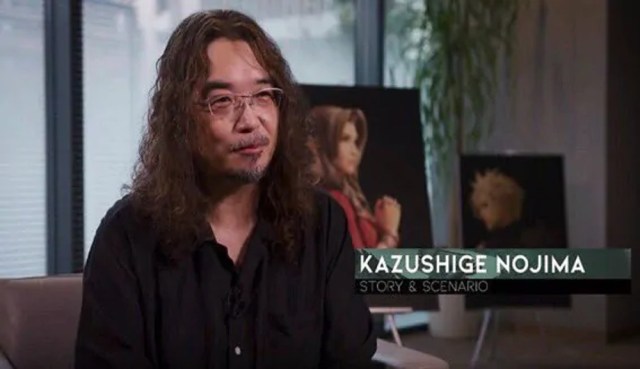
That’s all to establish the foundation of why I came to understand what’s actually happening in Final Fantasy VII Remake. I say “blamed” with my tongue in my cheek, since I’m not really upset about anything personally. I’m intrigued in the way these stories are coming together, obviously not planned ahead but still used as creative building blocks to the next thing. I’m telling you all right now that Final Fantasy VII Remake is a straight-up, literal and direct sequel to Final Fantasy VII. And Advent Children. And Dirge of Cerberus I guess, technically?
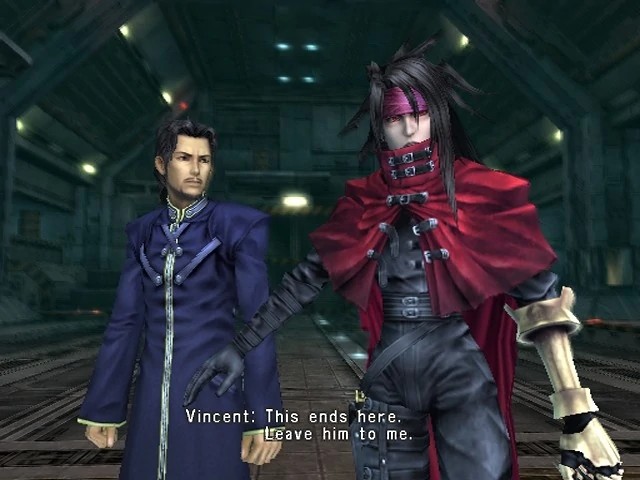
The common thread through all this Final Fantasy VII nonsense, all the way back to the original game, is Nojima. He’s been there since the beginning, contributing to the story but more importantly, stitching everything together. As far as I can tell, he’s solely in charge of the connective tissue, the parts of the story we don’t see in the games. The parts of the story we don’t see at all, and the parts we can see if we look for them. Which brings us to Advent Children, the movie that ain’t known for its storytelling but is ultimately the beginning of this whole mess.
Final Fantasy XV Did Nothing Wrong
And how did Nojima fill in the blanks? With good ol’ transmedia content, Square Enix’s own brand of sicko shit. A pair of novels that explain in clear terms what the hell is actually happening here. And yeah, the answer to everything is simple. It’s Sephiroth. The big sword and black wing goth princess who may or may not be responsible (at least in part) for the death of one Mario “Super Mario” Mario. Sephiroth’s the glue adhering these stories onto one timeline. Spinoffs or weird cameos aside, there is only one Sephiroth. The guy you see at the end of Remake is the same guy you beat the shirt off in 1997.
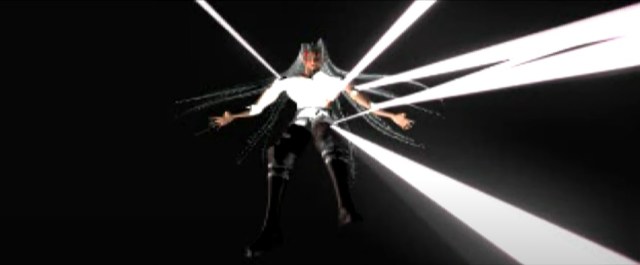
Not published in English until 2018 (that explains a lot), On the Way to a Smile’s a set of anthologies filling in the Lore behind Advent Children. The bigger stories are divided by chunks of two others, Lifestream: Black and Lifestream: White. In Black, Nojima gives Sephiroth what I like to call his “Do What I Want” powers. Sephiroth is on his way to Lifestream Hell, as the lifeblood of the planet is absorbing his Sephirothiness. Thoughts, memories, you name it. This guy is able to slow this process out of pure spite, long enough to see Meteor fail. Everything fell apart for Sephiroth, and he decides it’s all Cloud’s fault. All of this comes together as Mr. Masamune decides he can avoid dying by like, imprinting everything he has left on Cloud.

“If he could only cling to the core of his consciousness, he could keep himself apart from the abyss and stay free of the planet and its insatiable appetite. He had made his decision. Cloud would become the nucleus.”
Kazushige Nojima, On the Way to a Smile
When you have evil Do What I Want powers, you can just say things and it works. Basically, Sephiroth preserves the “core” of his consciousness, by being super pissed off about Cloud and his stupid haircut and cringey motorcycle and immaculate musculature. So the villain of our story is a Lifestream Rage Ghost hellbent on haunting Cloud and somehow taking over the planet or blowing it up or whatever. All of this is juxtaposed with Aerith, who is able to simply choose to retain her consciousness in the Lifestream. You know, Cetra Stuff. She doesn’t really want to stick around, but overhears Sephiroth’s ghost juice yelling about Cloud.
Seph ‘n’ the Boys: Lifestream Challenge
With this one story, we learn several new rules. Sephiroth is a rage ghost, and is supernaturally grafted to Cloud somehow. He can influence the corporeal world, but not directly. What he can do, is take other souls from the Lifestream, ones he influenced and infected with his bummer vibes (Geostigma!), and turn them into Puppet Boys. His powers stop short of just coming back himself, because the planet ate all his memories. A surprising limitation, but one Sephiroth reckons he can get around with Jenova cells. How? I dunno, it’s not important.
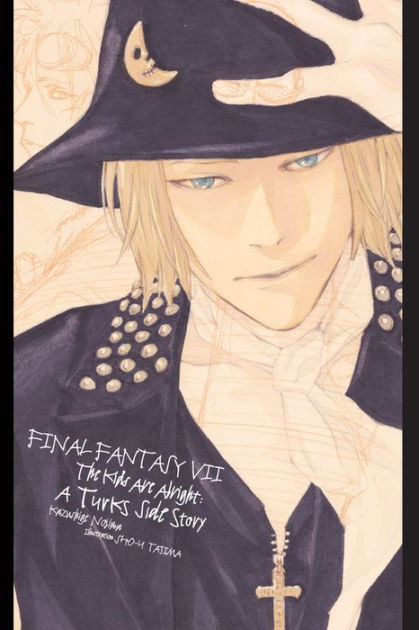
Nojima’s next novel, The Kids Are Alright: A Turks Side Story, squirms between the first book and Advent Children. Didn’t hit North America until 2019. This story’s about what the Turks were up to, but it also introduces (chronologically) Kadaj, one of the “Remnants of Sephiroth.” We learn Kadaj can totally shapeshift into more than black Dracula goo, taking on forms of multiple (deceased) people to deceive the book’s protagonist. Also he falls in the Lifestream and it eats him like cartoon lava. So when Kadaj and his boys show up in the movie, that means Sephiroth can just make a new one.
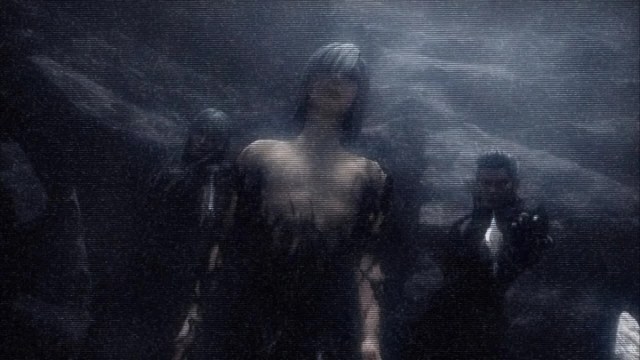
Then Advent Children, finally. We don’t need to get into this much, go watch it if you haven’t! And why not? You’re probably very confused right now. So in the movie, Sephiroth is able to take physical form by through Kadaj after he absorbs Jenova cells. He was right! Wow, what a hunch. There’s a fight, Cloud wins, yadda yadda. Sephiroth does the Chucky thing promising he’ll be back, then poof, Kadaj gets his body back to die a second time. The end!
That’s Why it’s Called Intergrade! Probably
All these rules are established across two novels and a movie. Yikes. Sephiroth isn’t totally dead, is attached to Cloud, can manipulate the Lifestream and the physical planet, and even retake physical form under the right conditions. He can make shapeshiting pseudo clones and when Cloud beat him up with his giant Lego sword he likely wasn’t killed the rest of the way. Cloud is his “nucleus,” after all. Does that make the rage ghost part the mitochondria?
Here’s where my reading starts. Sephiroth obviously can’t just make more background dancers and fight Cloud again. Are there any pieces of Jenova left? Cloud’s too strong to fight. There’s not enough mystic memory fuel to make himself a body. Plus Aerith is swimming around the Lifestream too, ready to go snitch to the Scooby Gang again if she thinks Sephiroth is up to something. So what options does this incorporeal dastard have left?
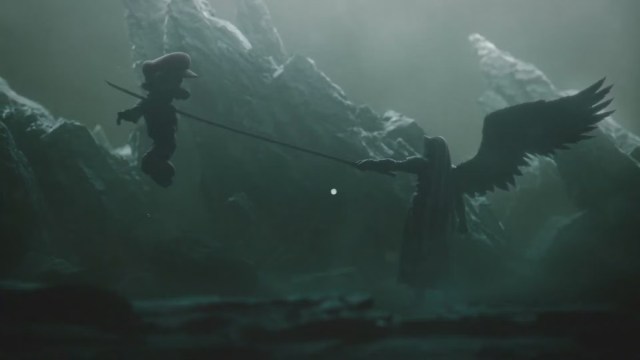
Perhaps he could figure out some new ones. Time travel, maybe? Or some kind of cosmic travel the Lifestream could facilitate? At this juncture all the signs point to a Hail Mary that might breach those roadblocks. A new body, a punier Cloud, a much less dead and Lifestreamy Aerith (maybe stabbing her was a bad idea) and a whole new planet with a fresh Black Materia to screw with. A new mom, too! Damn, this whole time travel thing sounds pretty good. If it works.
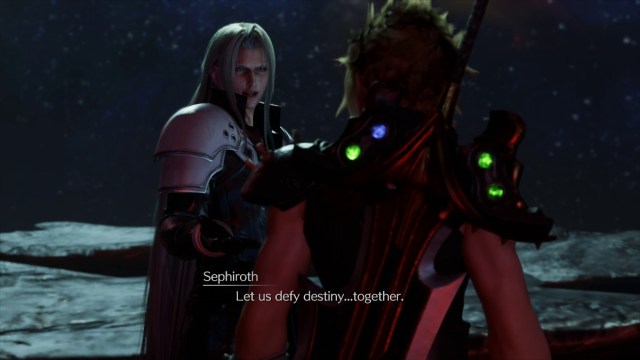
This train of thought lines up perfectly for what goes down in Remake. It explains how Sephiroth has become Mr. Metatextual Dickhead, how Aerith seemingly doesn’t exactly know what’s happening but is catching weird vibes (or just really good at hiding things) and it even explains the Whispers! The goofy Dementor things make more literal sense in this reading. As much as I love them silly allegories for angry fans or corporate pressure, Square Enix is clearly invested in an A Plot as well. If the Lifestream can be manipulated into time and/or space travel, and if it can punch the hell out of a giant Meteor, what’s stopping it from making a bunch of creepy ghost cops? I mean, Sephiroth did it.
An Ultimania Monkey Wrench
There’s one last piece, then I’ll unlock the door so you can all leave my basement. So, it was pointed out to me that the trio of colorful Whispers summoned by the Whisper Harbinger during Remake’s climax are similar to Kadaj and his friends. Sure enough when I looked into this, a third book (not a novel this time thank goodness) confirms that Whisper Rubrum, Whisper Croceo and Whisper Viridi were given fighting styles based on Kadaj, Yazoo and Loz respectively.
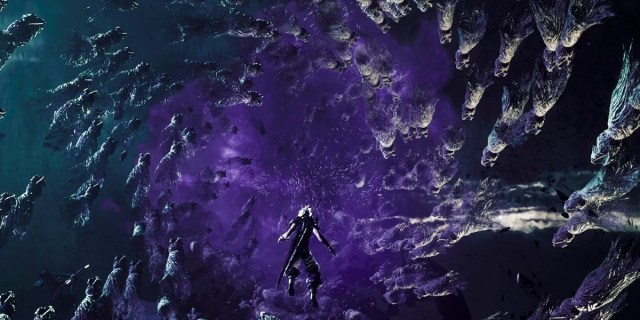
It’s definitely a weird one, since the Whispers are chasing Sephiroth too. But it’s important to remember how those beings came to be. After Advent Children those souls returned to the Lifestream. Perhaps the Lifestream figured it would fight fire with fire. Maybe it’s a lingering power thing. Maybe Sephiroth has had some kind of lasting impact in there. I’m hoping there’s more to this later on in Rebirth or later because it’s just as likely an easter egg.
AWAB
Sephiroth’s original intent seemed like convincing Cloud the planet was gonna be destroyed, and get him on board to change that. But Aerith seemed to help the Whispers get inside the Singularity, and everything hits the fan. Whether this Aerith knows everything, or the OG Aerith is less invasively influencing her, we’re witnessing two godlike beings from 1997 metaphysically fighting to convince AU 2020 Cloud what is Supposed to Happen, while the Lifestream Police escalate everything and end up helping Sephiroth anyway. Just like cops in real life! Cloud and everyone step out into a totally new world, inadvertently shifting the course of past, present and future. Now everyone who died before gets a second chance. That includes Sephiroth, and his second chance is kinda problematic.
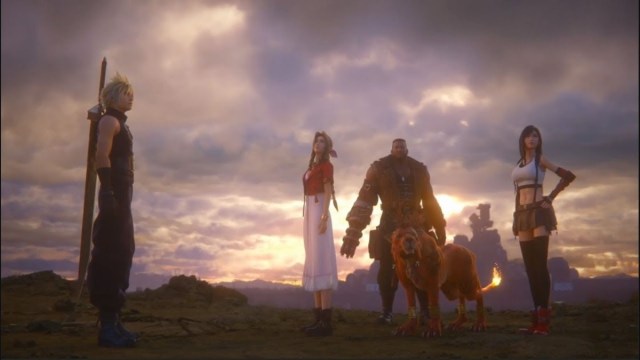
In sum: this is some kind of new timeline or world state, altering major events but heading in the same general (geographic?) direction as the original. This is the third “world,” we’ll say. Most of the protagonists are native to the second world (RIP), and Sephiroth is all the way back from the first one, presumably merged or occupying world two’s Sephiroth’s body. Aerith seems to have some connection to the original as well, but not as directly as Sephiroth. Because Sephiroth, remember, is an angry ghost who needs to haunt Cloud to exist. And he has Do What I Want powers, which are stronger because he’s kind of a real boy again.
I Want it My Way
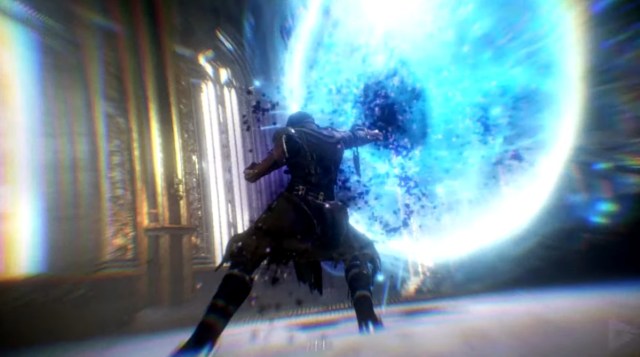
However all of the above is delivered will certainly be different, and probably way more complicated and obfuscated by weird dialogue. But it’s pretty clear these building blocks being used for Final Fantasy VII Rebirth and whatever’s next. The metatextual stuff is fun, but folks trying to look at Final Fantasy VII Remake through a Kingdom Hearts lens are barking up the wrong tree. If you take the in-game events at face value, like how JoJo’s Bizarre Adventure works, the fiction comes together. If anything, there are more parallels to Stranger of Paradise: Final Fantasy Origin which deals with similar cosmic shenanigans. Wild shit goes down, but in a way you can logically digest by the end. Jack Garland, the creator of the Final Fantasy time loop, even punches reality so hard it stops an extraterrestrial world reset. And guess what made him strong enough to do that? He got Do What I Want powers, fueled by rage and nu metal. And who gave Jack those powers? Kazushige Nojima, baby.
